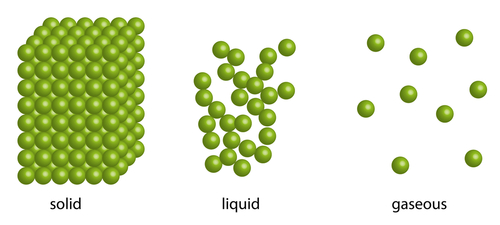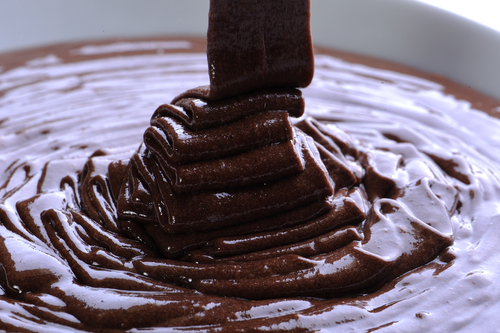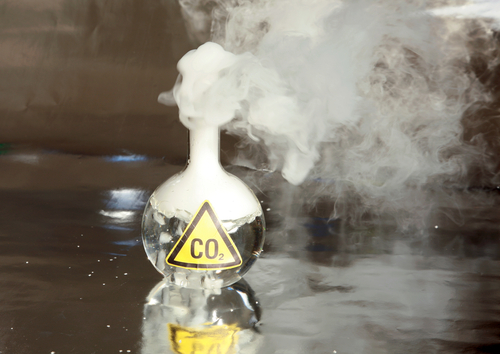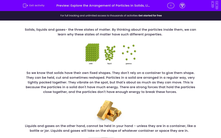Solids, liquids and gases- the three states of matter. By thinking about the particles inside them, we can learn why these states of matter have such different properties.

So we know that solids have their own fixed shapes. They don't rely on a container to give them shape. They can be held, cut and sometimes reshaped. Particles in a solid are arranged in a regular way, very tightly packed together. They vibrate on the spot, but that's about as much as they can move. This is because the particles in a solid don't have much energy. There are strong forces that hold the particles close together, and the particles don't have enough energy to break these forces.

Liquids and gases on the other hand, cannot be held in your hand - unless they are in a container, like a bottle or jar. Liquids and gases will take on the shape of whatever container or space they are in.

The particles in a liquid are arranged in a random way. They are close together, most of them touching each other, but there are some small gaps. So the particles can move around a little, over each other, allowing liquids to flow and be poured. They will continue moving slightly over each other until they reach the sides of the container they are in.
The particles are able to move around more than in a solid as they have more energy. The more energy particles have, the more easily they can break the strong forces that normally hold them together, so they can get further apart the more energy they have.

Gases will fill the entire space of whatever container they are in - if the container is a room, they will spread out to each and every corner. Again, this is because of the particle arrangement in a gas. The particles in a gas are spaced very far apart, move around very fast and they are randomly arranged. Because of this, gases can be easily compressed, or squashed. Gas particles have lots of energy, so much energy that they can easily overcome the strong forces trying to hold them together, meaning they can move as far apart as they like from each other!
It's almost as if the gas particles want to be as far away from each other as they can, so they will carry on moving and spreading out until the walls of a container stops them. Pressure in gases is caused by particles colliding with the walls of the container they are in, and exerting a force on these walls. This is called gas pressure.
If a gas is heated slightly, the energy of the gas particles increases. These higher energy particles move faster, colliding harder and more often with each other and the walls of the container. This increases the pressure. We can also increase the pressure of a gas by squashing the container. When you decrease the volume of a sealed container containing a gas, the particles collide with the walls more often, increasing the pressure.

That's a lot of information! If you need to, have another read through of the information above and when you're ready, let's try some questions ........







